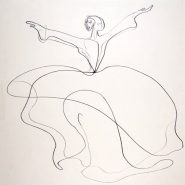Tag: gesture
By Anssi Karttunen March 9, 2019
Subjects Repertoire
Tags architecture, Brahms, color, flexibility, form, freedom, gesture, phrasing, precision
By Jean Hatmaker December 5, 2018
Subjects Playing Healthy
Tags Awareness, body awareness, center, choreography, dance, épaulement, gesture, poise, posture
By Rebecca Merblum October 18, 2018



